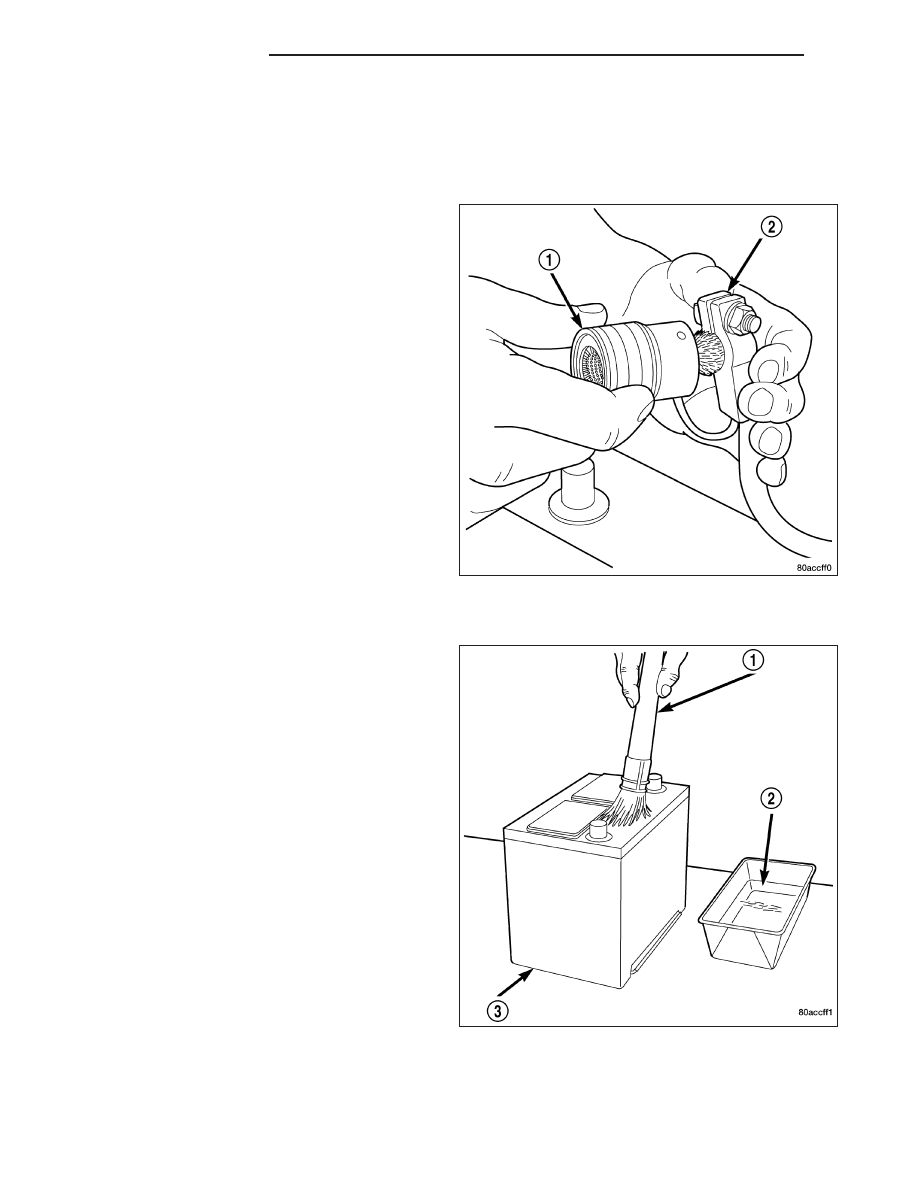Chrysler 300/300 Touring/300C, Dodge Magnum. Manual - part 405

CLEANING
The following information details the recommended cleaning procedures for the battery and related components. In
addition to the maintenance schedules found in this service manual, (Refer to LUBRICATION & MAINTENANCE/
MAINTENANCE SCHEDULES - DESCRIPTION) it is recommended that these procedures be performed any time
the battery or related components must be removed for vehicle service.
1. Clean the battery cable terminal clamps (2) of all
corrosion. Remove any corrosion using a wire
brush or cleaning tool (1), and a sodium bicarbon-
ate
(baking
soda)
and
warm
water
cleaning
solution.
2. Clean the battery tray and battery holddown hardware using a stiff bristle parts cleaning brush and a sodium
bicarbonate (baking soda) and warm water cleaning solution.
3. If the removed battery is to be reinstalled, clean the
outside of the battery case and the top cover (3)
with a sodium bicarbonate (baking soda) and warm
water cleaning solution (2) using a stiff bristle parts
cleaning brush (1) to remove any acid film. Rinse
the battery with clean water. Ensure that the clean-
ing solution does not enter the battery cells through
the vent holes. If the battery is being replaced,
(Refer to 8 - ELECTRICAL/BATTERY SYSTEM -
SPECIFICATIONS) for the factory-installed battery
specifications. Confirm that the replacement battery
is the correct size and has the correct ratings for
the vehicle.
8F - 6
BATTERY SYSTEM
LX